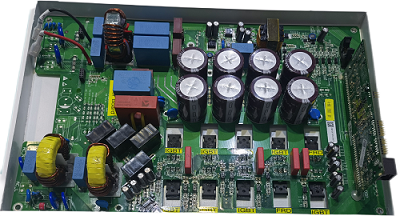 English
English-
 English
English -
 Español
Español -
 Português
Português -
 русский
русский -
 Français
Français -
 日本語
日本語 -
 Deutsch
Deutsch -
 tiếng Việt
tiếng Việt -
 Italiano
Italiano -
 Nederlands
Nederlands -
 ภาษาไทย
ภาษาไทย -
 Polski
Polski -
 한국어
한국어 -
 Svenska
Svenska -
 magyar
magyar -
 Malay
Malay -
 বাংলা ভাষার
বাংলা ভাষার -
 Dansk
Dansk -
 Suomi
Suomi -
 हिन्दी
हिन्दी -
 Pilipino
Pilipino -
 Türkçe
Türkçe -
 Gaeilge
Gaeilge -
 العربية
العربية -
 Indonesia
Indonesia -
 Norsk
Norsk -
 تمل
تمل -
 český
český -
 ελληνικά
ελληνικά -
 український
український -
 Javanese
Javanese -
 فارسی
فارسی -
 தமிழ்
தமிழ் -
 తెలుగు
తెలుగు -
 नेपाली
नेपाली -
 Burmese
Burmese -
 български
български -
 ລາວ
ລາວ -
 Latine
Latine -
 Қазақша
Қазақша -
 Euskal
Euskal -
 Azərbaycan
Azərbaycan -
 Slovenský jazyk
Slovenský jazyk -
 Македонски
Македонски -
 Lietuvos
Lietuvos -
 Eesti Keel
Eesti Keel -
 Română
Română -
 Slovenski
Slovenski
How to check and prevent PCB circuit short circuits?
2023-05-08
Check the PCB wiring characteristics for short circuits:
1: Wire-to-wire short circuit.
2: Line-to-face (layer) short circuit.
3: Face-to-face (layer-to-layer) short circuit .
Check the functional short circuit of the PCB:
1: PCB welding short circuit (such as tin connection).2: PCB short circuit (such as residual copper, hole deviation, etc.).
3: PCB device short circuit.
4: PCB assembly short circuit.
5: ESD/EOS breakdown.
6: PCB inner layer micro-short circuit.
7: PCB electrochemical short circuit (such as chemical residue, electromigration).
8: Short circuit caused by other reasons on the PCB.
Short circuits on PCB traces are a serious problem that can cause system failure or even damage. Therefore, checking and preventing short circuits on PCB lines is essential. Generally speaking, there are several ways to check the short circuit of the PCB line: one is to use a test instrument to check whether there is a short circuit in the PCB line; Whether there is a short circuit in the circuit; the third is to use X-ray inspection, you can use X-ray inspection equipment to check whether there is a short circuit in the PCB circuit. In addition to inspection, some preventive measures can be taken to prevent short circuits in PCB lines, such as using high-quality PCB boards, using correct soldering methods, checking whether the soldering points are good, and so on.
Prevent PCB circuit short circuits:
1: If it is manual welding, you need to develop good habits:
a). Check the PCB visually before soldering, and use a multimeter to check whether the key circuits (especially the power supply and ground) are short-circuited;
b). Each time a chip is soldered, use a multimeter to test whether the power supply and ground are short-circuited;
c). Do not shake the soldering iron when soldering. If the solder is thrown on the solder pins of the chip (especially surface mount components), it will not be easy to find out.
2: Open the PCB design drawing with a PC, light up the short-circuit network, and observe which positions are the closest and easiest to connect to one piece, especially pay attention to the short-circuit inside the IC.
3 : Be careful when soldering small-sized surface-mount capacitors, especially the power filter capacitors (103 or 104), which are large in number and can easily cause a short circuit between the power supply and the ground. Of course, sometimes you are unlucky and the capacitor itself is short-circuited, so the best way is to check the capacitor before welding
4: It is found that there is a short circuit on the PCB . Take a board to secant (especially suitable for single/double-layer boards), and after secanting, electrify each part of the functional blocks separately, and gradually eliminate them.
5: If there is a BGA chip, since all solder joints are covered by the chip and cannot be seen, and it is a multi-layer PCB (more than 4 layers), it is best to separate the power supply of each chip during design, using magnetic beads or 0 ohm The resistance is connected, so that when there is a short circuit between the power supply and the ground, the magnetic bead detection is disconnected, and it is easy to locate a certain chip. Due to the difficulty of BGA soldering, if it is not automatically soldered by the machine, a little carelessness will short-circuit the adjacent power and ground solder balls.
6 : Use the short-circuit location analysis instrument. For some situations in specific cases, the detection efficiency of the instrument is higher, and the detection accuracy is also higher.
PCB circuit short circuit is a common problem, and the following measures can be taken to check and prevent PCB circuit short circuit: first, when designing the PCB, ensure the correctness of the PCB circuit and ensure the integrity of the circuit; secondly, in the process of PCB production Check the soldering quality of the PCB to avoid short circuits caused by poor soldering; finally, use professional testing instruments to test to ensure the integrity and correctness of the PCB circuit. In addition, it is necessary to regularly check the PCB circuit, find problems in time and deal with them in time.

In PCB maintenance, if it is found that the fault is a short circuit of the public power supply, it is often puzzling, because many devices share the same power supply, and every device using this power supply is suspected of a short circuit. If there are not many components on the board, use "carpet " After all, the short-circuit point can be found by the method of "blanket search ". If there are too many components, whether the " blanket search " can find the situation depends on luck.
To deal with the plug-in capacitor on the PCB, you can use diagonal pliers to cut off one leg (be careful to cut it from the center, do not cut it at the root or the circuit board). The plug-in IC can cut off the VCC pin of the power supply. A chip or capacitor is shorted. If it is an SMD IC, you can use a soldering iron to melt the solder on the power pin of the IC and lift it up to make it away from the VCC power supply. After replacing the short-circuit element, re-weld the cut or raised part.
There is another quicker method, but it requires a special instrument: a milliohmmeter.
We know that the copper foil on the circuit board also has resistance. If the thickness of the copper foil on the PCB is 35um and the printed line width is 1mm, the resistance value is about 5mΩ for every 10mm long. It cannot be measured with a multimeter, but it can be measured with a milliohm meter.
We assume that a certain component is short-circuited, and it is 0Ω when measured with an ordinary multimeter, and it is about tens of milliohms to hundreds of milliohms when measured with a milliohm meter. The resistance value must be the smallest (because if it is measured on the two pins of other components, the obtained resistance value also includes the resistance value of the copper foil trace on the circuit board), so we compare the resistance value difference of the milliohm mete When the resistance value of a certain component (same if there is a short circuit in solder or copper foil) is measured, the component is the main suspect. Through this method, the obstacle point can be quickly found.
For more details, please pay attention to JBPCB
X
We use cookies to offer you a better browsing experience, analyze site traffic and personalize content. By using this site, you agree to our use of cookies.
Privacy Policy



